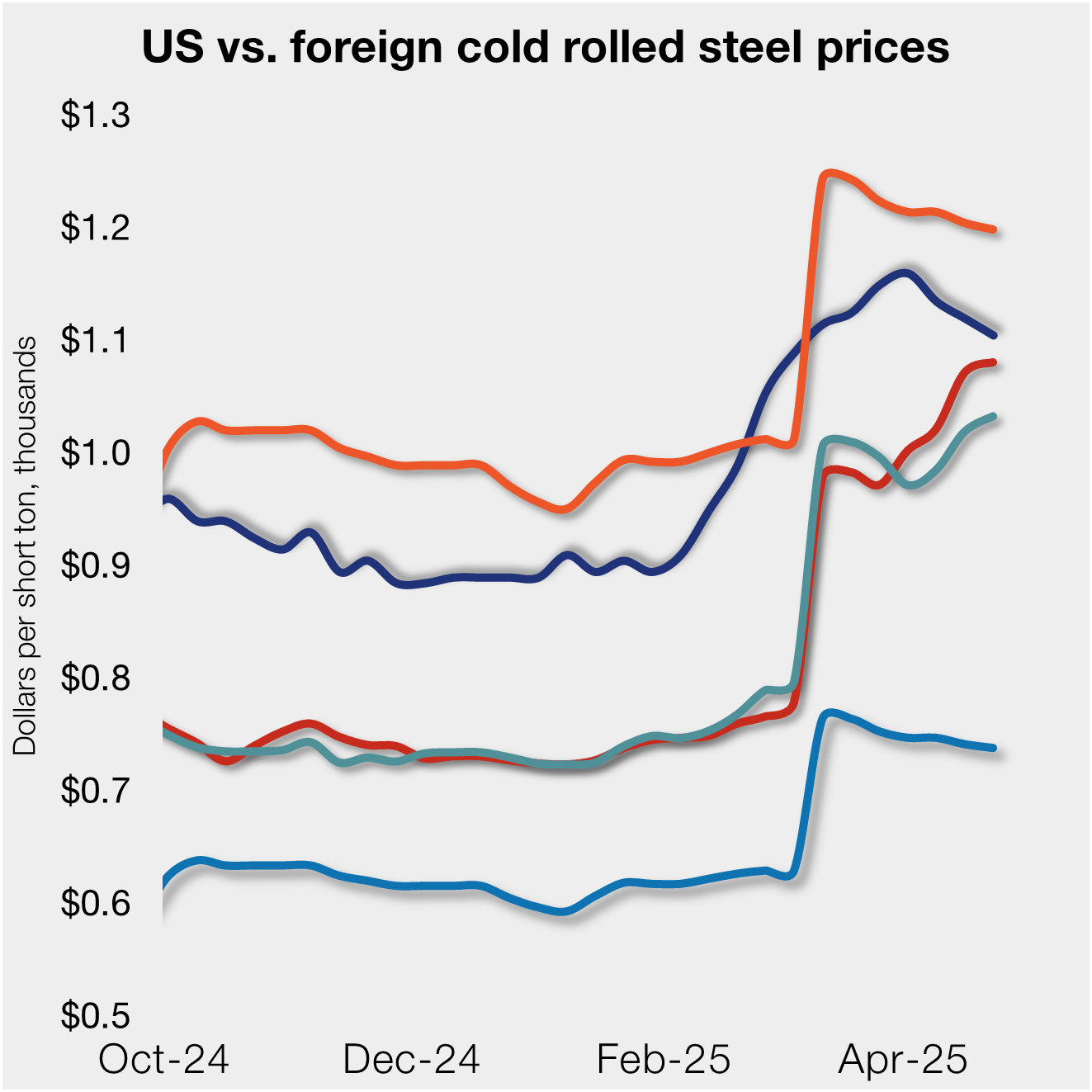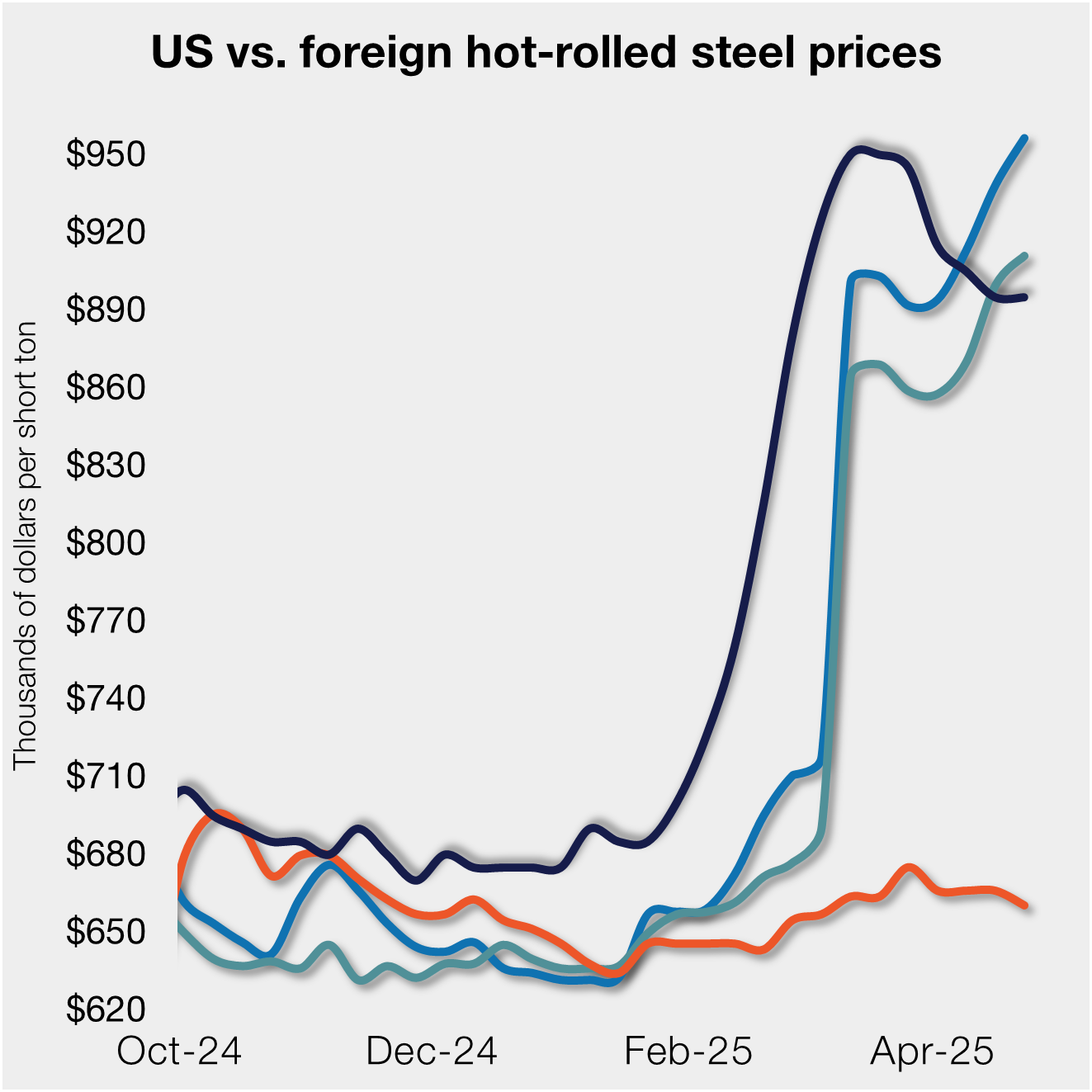Steel Products

India Economy and Steel Industry at Risk
Written by Sandy Williams
August 20, 2013
The erosion of the rupee brought the currency to a new record low on Monday at 62.76 to the U.S. dollar. A growing deficit at 4.8 percent of the GDP is blamed for the currency weakness in India that some say may be the country’s worst financial crisis in decades.
The Royal Bank of India has attempted to halt the slide by tightening up cash supplies, restricting investment abroad, and curbing imports of precious metals. Analysts are predicting further losses before conditions begin easing in the fourth quarter of this year.
The Indian currency crisis has had an impact on the country’s steel industry prompting steel makers on Tuesday to announce a halt of scrap imports for iron and steel production in Punjab and Haryana. Steel makers have complained of high import bills creating huge losses for the mills. Punjab alone has more than 200 induction and arc furnaces that import 200,000 tonnes of scrap per month.
Bank of America Merrill Lynch in July had a bleak forecast for the Indian steel industry. Weak demand from automotive, construction and infrastructure are pressuring margins along with over supply.
“We believe the recent rupee depreciation (down 10 per cent since March) could cushion the fall in domestic steel prices, but steel producers may not have the pricing power to lift prices as demand is weak, supply is rising and utilisations remain at 10-year low,” said BofAML.
Yet despite predictions and high import costs, the World Steel Association reported India steel production at 6.6 million tonnes in July, a growth of 4.3 percent over the same period in 2012.
Investment in Steel
The India government has been on a campaign since 1991 to reboot the country’s image as an investment-friendly country. Steel was removed from the list of industries reserved for the public sector and licensing requirements for capacity creation was abolished, along with price and distribution controls. A 2012 report by the Ministry of Steel reported crude steel production capacity is likely to be around 140-149 million tonnes by 2017 and more than 488 million tonnes by 2020, based on current and planned steel projects.
The surge in investment interest, however, is frequently stymied by red tape involving land purchase, environmental regulations and reliable energy and raw material sources. According to Project Monitor, 45 memorandums of intent (MoU) were signed between 2003 and 2006 for construction of steel plants in the state of Odisha. Most of those have never been built and recently 11 projects were given two year extensions.
Posco and ArcelorMittal recently scrapped projects due to the difficulty of obtaining clearances—a $5.3 billion steel plant for Posco in Karnataka and an 8.5 billion steel plant project for ArcelorMittal in Odisha. Posco plans to continue with its $12 billion project in Odisha but construction will not begin until land acquisition and iron ore mining rights are obtained. A process that could still take years.
Foreign investment in India fell by one third in 2012 to $26 billion in 2012. Frequent policy changes, slow approvals and a weak economy make investors hesitant to risk their capital in India—investments the country urgently needs to invigorate its currency and bolster its economic growth.

Sandy Williams
Read more from Sandy WilliamsLatest in Steel Products

US rig count up, Canada declines
Oil and gas drilling activity was mixed this week, according to Baker Hughes. US rig counts expanded for a second straight week, while Canadian activity continued its seasonal slowdown of eight consecutive weeks.

US, offshore CRC prices continue to diverge
US cold-rolled (CR) coil prices declined again this week, slipping for a third straight week. Most offshore markets did the opposite, moving higher this week.

S232 lifts EU HR price over US, Asian HR still well behind
Domestic hot-rolled coil prices were flat this week after dropping for four straight weeks. Most offshore markets bucked the trend and gained ground.

SMU Steel Demand Index dips into contraction
SMU’s Steel Demand Index has moved into contraction, according to late April indicators. The slowdown comes in response to growing tariff uncertainty after the index reached a four-year high in late February.

Nucor selects Fives Group for new galv line at CSI
Nucor Corp. has tapped Fives Group as its partner in designing and manufacturing the new continuous galvanizing line being added at its California Steel Industries (CSI) joint venture in Fontana, Calif.
